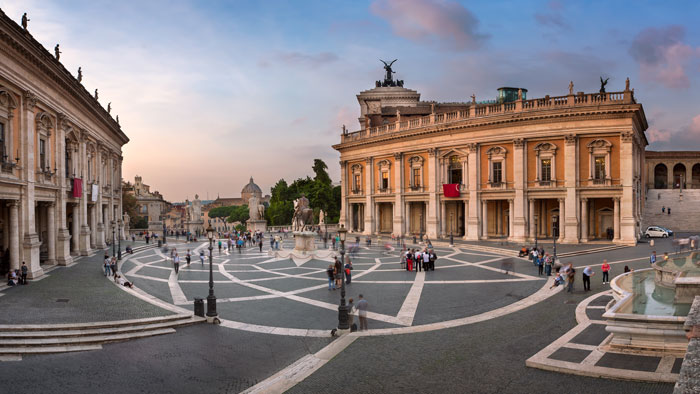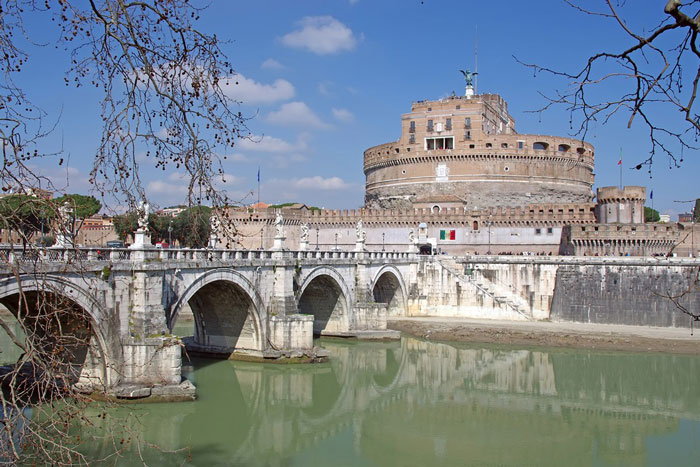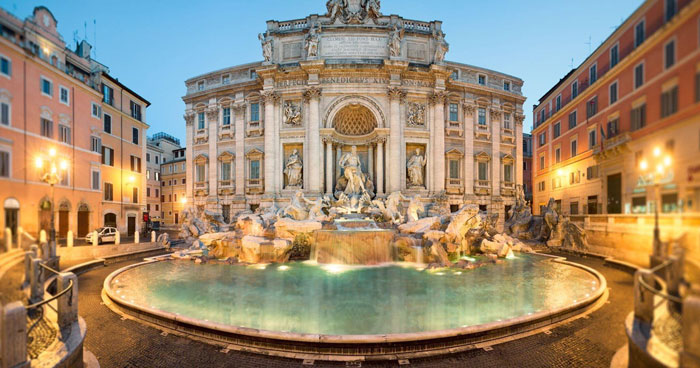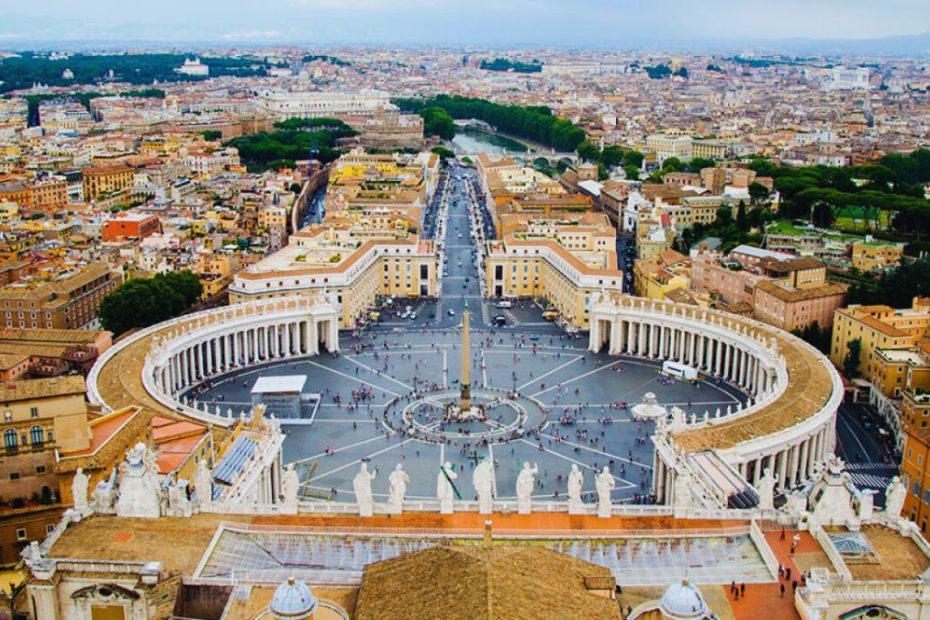Rome, the Eternal City, brims with ancient history, stunning architecture, and vibrant culture. Whether you’re a history buff or a foodie, Rome offers an unforgettable experience. In just three days, you can immerse yourself in its rich world, visiting iconic landmarks and savoring delicious Italian cuisine.
Key Takeaways
- Efficient 3-Day Itinerary: Cover major sights including the Colosseum, Roman Forum, Vatican Museums, and St. Peter’s Basilica, while also exploring vibrant neighborhoods like Trastevere and Monti.
- Mix of History and Culture: Dive into ancient Roman history with visits to the Colosseum and Roman Forum, and appreciate Renaissance and Baroque architecture at sites like the Spanish Steps and Trevi Fountain.
- Local Dining Experiences: Indulge in authentic Roman cuisine at local trattorias, and enjoy dessert at renowned gelaterias for a genuine taste of Rome.
- Practical Travel Tips: Utilize public transportation with a Roma Pass, start your days early to avoid crowds, stay hydrated, and dress appropriately, especially when visiting religious sites.
- Safety Measures: Be mindful of pickpockets in crowded areas and use anti-theft bags to keep personal belongings secure.
- Flexibility and Exploration: While it’s beneficial to have a plan, leaving room for spontaneous activities can lead to unique and memorable experiences.
Overview of the 3 Days Itinerary in Rome

A 3-day itinerary in Rome mixes top sights, hidden gems, and local experiences to provide a well-rounded trip.

Day 1:
Morning: I start my day with a local street food tour and breakfast in Monteverde. This area gives a snapshot of the local vibe, offering delicious treats and a welcoming atmosphere.
Afternoon: I visit the Spanish Steps and the Trevi Fountain next. These landmarks are perfect for taking iconic photos. Then, I explore the Monti district, known for its artisan shops and boutiques. Via del Corso offers a mix of low-end and high-end brands, making it great for shopping enthusiasts.
Evening: I end my first day with a short walking tour on the Capitoline Hill at sunset. The panoramic views of the city and ancient Roman ruins provide a breathtaking experience.
Day 2:
Morning: I dedicate the morning to visiting the Colosseum, Roman Forum, and Palatine Hill. These historical landmarks are must-sees for anyone interested in ancient Roman history.
Afternoon: After a morning filled with history, I spend the afternoon exploring the Vatican Museums and the Sistine Chapel. Climbing the dome of St. Peter’s Basilica rewards me with stunning views of the city.
This itinerary ensures a mix of culture, history, and local flavor, making my trip to Rome unforgettable.
Day 1: Ancient Rome

Day 1 focuses on Ancient Rome, with visits to iconic landmarks and historical sites that reveal the grandeur of the Roman Empire.
Morning: The Colosseum and Roman Forum
I start my day at the Colosseum. Construction began in 72 AD, and it stands as one of the world’s most visited tourist attractions. This grand amphitheater once hosted gladiatorial contests, animal hunts, and public spectacles. Tours often include skip-the-line tickets and guided narrations, which detail the structure’s history and significance.
After exploring the Colosseum, I head to the Roman Forum, situated nearby. This historical site was ancient Rome’s political, commercial, and religious center. Walking through the ruins, I see the remnants of temples, basilicas, and other civic buildings, providing insight into the daily life and grandeur of ancient Rome. Key highlights include the Temple of Saturn, Arch of Septimius Severus, and the Curia. Guided tours can enrich this experience by providing historical contexts and intriguing anecdotes.
Afternoon: Palatine Hill and Capitoline Museums
In the afternoon, I take a short walk to Palatine Hill. Renowned as Rome’s birthplace, this site offers stunning vistas of the Roman Forum and Colosseum. Palatine Hill also features the remains of imperial palaces and storied gardens, making it an exquisite spot for both history and nature enthusiasts. Key highlights include the Flavian Palace and House of Livia. It’s fascinating to explore the mythological and historical narratives associated with this ancient hill.
Next, I visit the Capitoline Museums, located close to the Roman Forum. The museums house an extensive collection of art and artifacts showcasing ancient Roman history, culture, and art. Key pieces include the bronze statue of the She-Wolf, the Capitoline Venus, and the equestrian statue of Marcus Aurelius. These museums provide an in-depth look into Rome’s artistic and historical legacy.

Evening: Piazza Venezia and Altar of the Fatherland
In the evening, I head to Piazza Venezia, a bustling hub and one of Rome’s key intersections. From there, I visit the Altar of the Fatherland, also known as Il Vittoriano. This monument, dedicated to Victor Emmanuel II, the first king of unified Italy, offers panoramic views of the city from its terrace. Constructed in the early 20th century, it stands as a symbol of Italy’s unification and pride.
The Altar of the Fatherland houses the Tomb of the Unknown Soldier, guarded by an eternal flame. This evening visit offers a serene atmosphere, allowing me to reflect on Rome’s rich history while gazing at the beautifully illuminated cityscape.
Day 2: Vatican City and Surroundings

Day 2 centers around Vatican City. I’ll guide you through St. Peter’s Basilica, the Vatican Museums, and more.
Morning: St. Peter’s Basilica and Vatican Museums
Start the day by heading to St. Peter’s Basilica at around 7:30 or 8:00 am. Avoid Wednesdays since the Pope holds an audience, and the basilica opens late in the afternoon. This early visit allows you to avoid crowds and experience the grandeur of the basilica in relative peace. The basilica is an architectural masterpiece and houses Michelangelo’s Pieta.
At 9:00 am, make your way to the Vatican Museums. These museums hold priceless art collections, including Raphael Rooms and the renowned Sistine Chapel ceiling painted by Michelangelo. Booking a guided tour is advisable as it helps in exploring the complex and avoiding long queues. The guided tour also offers valuable insights about the artworks and the history of the Vatican. Set aside several hours to fully appreciate the collections.
Afternoon: Sistine Chapel and Castel Sant’Angelo
By noon, it’s time for a lunch break. I recommend exploring nearby cafes or restaurants for authentic Roman cuisine.
At 1:30 pm, return to the Vatican Museums to visit the Sistine Chapel. This chapel is a central highlight of the Vatican, famous for Michelangelo’s Creation of Adam. To prevent feeling rushed, take some time to absorb the intricate details of the frescoes.
Next, at 3:00 pm, walk over to Castel Sant’Angelo. Originally built as a mausoleum for Emperor Hadrian, it later served as a fortress and castle. Today, it offers stunning views of the city and houses a museum. The castle’s rich history and panoramic views make it a must-visit destination.

Evening: Trastevere Neighborhood
By 5:30 pm, explore the historic heart of Rome at your leisure. A leisurely stroll along cobblestone streets is a great way to soak in the ambiance.
At around 7:00 pm, head to the lively Trastevere neighborhood. Known for its vibrant nightlife and restaurant scene, Trastevere offers a mix of traditional and modern culinary experiences. Enjoy a delicious dinner, followed by drinks in one of the many bustling bars. The neighborhood’s charm lies in its narrow alleyways, centuries-old churches, and dynamic nightlife. It’s the perfect way to end an eventful day.
Day 3: Renaissance and Baroque Rome

On the third day, I immersed myself in Renaissance and Baroque Rome, experiencing its iconic landmarks and historical sites. This day’s itinerary promised a journey through some of the city’s most artistic and architecturally stunning locations.
Morning: Spanish Steps and Piazza di Spagna
I started my morning at the Spanish Steps, one of Rome’s most famous landmarks. The grand staircase, with its 138 steps, offered beautiful views of the city. The Baroque style of the steps designed by Francesco de Sanctis and Alessandro Specchi in the 18th century made it a perfect spot for some morning photography. While sitting there, I noticed the lively Piazza di Spagna at the base of the steps.
Piazza di Spagna buzzed with activity. The Fontana della Barcaccia, a Baroque-style fountain by Pietro Bernini and his son Gian Lorenzo Bernini, immediately caught my eye. Strolling through the square, I could see a blend of historical architecture and modern-day life, making it a wonderful start to the day.
Afternoon: Trevi Fountain and Pantheon
After leaving Piazza di Spagna, I headed to the Trevi Fountain, one of the most iconic fountains in the world. This stunning baroque masterpiece, designed by Nicola Salvi and completed by Giuseppe Pannini in 1762, was crowded with visitors throwing coins into the water. Legend says that throwing a coin with your right hand over your left shoulder ensures your return to Rome. The clear, turquoise water of the fountain, combined with its grand sculptures, made it an unforgettable visit.
Next, I visited the Pantheon, an ancient temple turned church with a fascinating history. Originally built by Marcus Agrippa and later reconstructed by Emperor Hadrian around 126 AD, the Pantheon boasts a massive dome, with its oculus being the only source of natural light. This architectural marvel showcases the innovation of its time and remains one of Rome’s best-preserved ancient buildings. Inside, I admired the grandeur and symmetry that have inspired architects for centuries.

Evening: Piazza Navona and Campo de’ Fiori
As the day progressed into evening, I found myself at Piazza Navona, a vibrant square known for its stunning fountains and baroque architecture. The Fountain of the Four Rivers by Gian Lorenzo Bernini stood at the center, capturing my attention with its elaborate sculptures representing four major rivers of the continents known at that time: the Nile, Ganges, Danube, and Rio de la Plata. This square, once an ancient Roman stadium, now hosts restaurants, cafes, and street performers, offering a perfect blend of history and contemporary life.
To end my day, I strolled to Campo de’ Fiori, a historic square that transforms from a bustling market in the morning to a lively spot in the evening. The statue of Giordano Bruno stood in the center, a reminder of the square’s turbulent past. Surrounded by numerous bars and trattorias, I enjoyed some authentic Roman cuisine. The evening atmosphere of Campo de’ Fiori, with locals and tourists mingling, provided a fitting end to my exploration of Renaissance and Baroque Rome.
Tips for a Memorable Trip

Accommodation Selection
Choose accommodation that is centrally located. This ensures easy access to major landmarks, saving travel time. I recommend staying near the historic center, around areas like Trevi Fountain or Piazza Navona. Both areas provide easy access to public transport and are filled with dining and shopping options.
Transportation
Use Rome’s public transportation system. Buses and metro services cover most of the city. Purchase a Roma Pass if staying for three days; it offers unlimited access to public transport and discounts for museums and attractions. Taxis are an option, but be mindful of higher costs compared to public transport.
Dining Experience
Explore local trattorias for authentic Roman cuisine. Avoid tourist-heavy spots near major attractions, where prices are higher and quality can be lower. Opt for places with more locals than tourists. For example, I found Trattoria da Enzo al 29 in Trastevere perfect for traditional dishes. Don’t skip dessert; try gelato from Gelateria del Teatro or Gelateria La Romana.
Language Basics
Learn basic Italian phrases. Though many Romans speak English, using Italian pleasantries enhances the experience. Here are some useful phrases:
- “Buongiorno” (Good morning)
- “Grazie” (Thank you)
- “Per favore” (Please)
- “Scusi” (Excuse me)
Dress Code
Dress comfortably yet respectfully. When visiting religious sites like the Vatican, St. Peter’s Basilica, or Rome’s many churches, follow the dress code: shoulders and knees covered. Comfortable shoes are essential due to cobblestone streets and extensive walking.

Safety Tips
Keep an eye on personal belongings. Rome, like any major city, has pickpockets, especially in crowded areas like public transport or tourist hotspots. Carry only essentials and use anti-theft bags. Avoid flashing valuables publicly.
Early Starts
Start early to avoid crowds. Key attractions like the Colosseum, the Vatican Museums, and the Trevi Fountain get incredibly busy. Arriving early not only provides a more relaxed experience but also better photo opportunities.
Hydration and Rest
Stay hydrated and take rest breaks. Rome’s climate can be warm, especially in summer. Use water fountains around the city, known as “nasoni,” to refill bottles. Plan intermittent breaks at cafes or gelaterias to rest and refresh.
Guided Tours
Consider guided tours for in-depth understanding. Tours at locations like the Colosseum and Vatican Museums provide historical context and access to restricted areas. I joined a guided tour of the Roman Forum and it enriched my visit with historical anecdotes I wouldn’t have known.
Off-the-Beaten-Path
Explore lesser-known sites. While the major attractions are a must-see, places like Villa Borghese Gardens or the Catacombs of San Callisto offer unique perspectives of Rome’s history and beauty without the massive crowds. Visiting these sites can offer a more personal experience of the city.
Time Management
Plan but leave room for spontaneity. While having a structured plan allows you to cover major sites, being flexible lets you enjoy unexpected discoveries. I stumbled upon a charming local market near Campo de’ Fiori and it became one of the highlights of my trip.
Use these tips to enhance your three-day adventure in Rome. They ensure a seamless blend of planned exploration and impromptu discoveries, creating a memorable Roman holiday.
Conclusion
Rome is a city where history and culture intertwine at every corner. By following this 3-day itinerary you’ll experience the essence of what makes Rome so captivating. From the grandeur of the Colosseum to the spiritual splendor of the Vatican and the artistic marvels of the Renaissance and Baroque periods every moment in Rome is a step back in time.
Remember to start early to beat the crowds and stay hydrated as you wander through the city’s timeless streets. Embrace the local culture by dining at trattorias and learning a few Italian phrases. Balance your planned activities with spontaneous discoveries to make your Roman holiday truly unforgettable.
Whether it’s your first visit or a return trip Rome always has something new to offer. Enjoy every moment and create memories that will last a lifetime.
Frequently Asked Questions
What are the must-see sites in Rome for a 3-day trip?
Day 1: Colosseum, Roman Forum, and Palatine Hill.
Day 2: St. Peter’s Basilica, Vatican Museums, Sistine Chapel, and Trastevere.
Day 3: Spanish Steps, Trevi Fountain, Pantheon, and more Renaissance and Baroque sites.
What is the best way to get around Rome?
Using public transportation like buses and the metro is efficient for exploring Rome. Consider getting a Roma Pass for easy access and discounts.
Where should I stay in Rome to be centrally located?
Choose accommodations near the city center, Vatican, or Termini Station to be close to major attractions and public transport options.
What are some dining recommendations in Rome?
Dine at local trattorias for authentic Italian cuisine. Popular ones include Da Enzo al 29 in Trastevere and Trattoria Vecchia Roma near Termini.
How can I avoid crowds at popular tourist sites?
Start your day early, ideally before 8 AM, to visit major attractions like the Colosseum and Vatican Museums with fewer crowds.
Are guided tours worth it in Rome?
Yes, guided tours can provide valuable insights and skip-the-line benefits, especially at busy sites like the Colosseum and Vatican Museums.
How can I stay safe from pickpockets in Rome?
Be vigilant, keep your belongings secure, and avoid carrying large sums of cash. Use money belts and stay alert in crowded areas.
What basic Italian phrases should I learn for my trip?
Learn phrases like “Ciao” (Hello), “Grazie” (Thank you), and “Quanto costa?” (How much does it cost?), which can enhance your travel experience.
Is it necessary to dress a certain way when visiting Rome?
Yes, especially when visiting religious sites. Dress modestly with covered shoulders and knees to respect cultural norms and gain entry.
How can I stay hydrated while touring Rome?
Carry a refillable water bottle and use the many public water fountains, known as “Nasoni,” scattered throughout the city.
Are there any lesser-known sites worth visiting in Rome?
Yes, consider exploring areas like the Aventine Hill with its Orange Garden and keyhole view or the Via Appia Antica for ancient Roman roads and tombs.
How can I balance planned activities with spontaneous discoveries in Rome?
Plan major sites ahead but leave some free time each day to wander and explore Rome’s charming streets, cafes, and unexpected gems.

